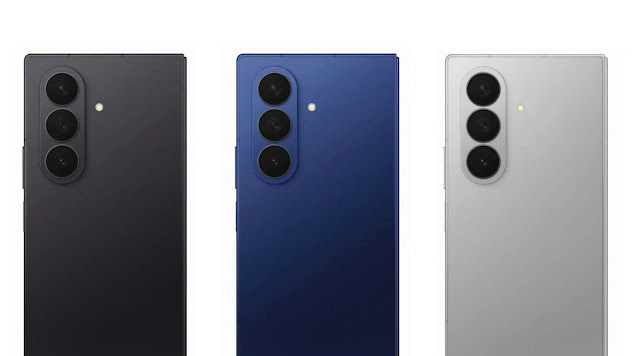Samsung Resumes Market Leadership Amid Global Smartphone Tariffs:
Real Price Strategies Unveiled:
As we hit mid-2025, the smartphone world is buzzing more than ever. The ongoing trade tensions and tariffs have shaken up pricing and availability. Samsung, once again, steps up to reclaim its top spot. How? By adjusting its prices with real figures that attract consumers while holding firm against competitors. Let’s explore how Samsung’s smart pricing moves are changing the game.
Market Recovery: Samsung’s Strategic Rebound in 2025
The Shift in Global Market Share
Post-tariff chaos has hit many brands hard. But Samsung has bounced back, increasing its global market share to around 22.5%, up from just under 20% last year. While Apple stays strong, Samsung’s pricing tactics are giving it a clear edge. Xiaomi and Huawei have lost ground to Samsung's more flexible pricing and product options.
Factors Behind Samsung’s Recovery
Samsung’s comeback isn’t luck. It stems from:
- Supply chain resilience: They’ve diversified manufacturing hubs to keep products moving.
- Transparent pricing: Real prices on popular models show consumers they’re getting value for their dollar.
- Innovative products: Updating flagship features without inflating costs keeps Samsung appealing.
Real Price Adjustments: How Samsung is Competing Effectively
Premium Segment: Galaxy S23 Ultra Pricing Strategy
Samsung prices its top flagship at around $1,200 to $1,250 in key markets like the US and Europe. This price reflects its cutting-edge camera, Snapdragon processor, and premium build. Consumers see the value in these features, especially when comparing the Galaxy S23 Ultra to Apple’s iPhone 14 Pro Max, which often costs over $1,300.
Mid-Range Segment: Galaxy A Series Price Realities
Mid-range phones remain fan favorites. The Galaxy A54 sells for approximately $350 to $400, and the A34 hovers around $300 to $350. These models pack solid specs like big screens, decent cameras, and fast charging—fitting budgets in many regions, from Southeast Asia to Latin America. Samsung keeps prices competitive, especially where tariffs push costs higher.
Entry-Level and Budget Options: Galaxy M Series Pricing
Samsung’s M series, built for emerging markets, is more budget-friendly. For example, the Galaxy M14 is selling for about $180 to $200, and the Galaxy M23 is around $220. These phones focus on lasting batteries and simple features. Their lower prices help Samsung stay relevant even when tariffs make importing pricier models difficult.
Navigating Tariffs and Trade Uncertainties: Samsung’s Price Optimization Tactics
Flexibility in Supply Chain and Manufacturing
By shifting some production locally, Samsung can cut costs. For example, manufacturing plants in India and Vietnam help keep prices steady despite tariffs overseas. This localized approach often results in actual prices lower than before, making high-quality phones more accessible.
Dynamic Pricing and Promotions
During holidays or big sales, Samsung drops prices to attract buyers. For instance, during summer deals, the Galaxy S23 Ultra was discounted by $100, making it available at about $1,150 in the US. Regional promotions help combat tariff increases and drive sales in tough markets.
Strategic Pricing to Maintain Market Share
Samsung balances profit with affordability. Some models see slight price hikes due to tariffs, but discounts offset that. Experts say this flexible approach prevents losing customers to less expensive brands that can’t adapt as quickly.
Regional Price Variations and Consumer Impact
North America
In the US, the Galaxy S23 Ultra is generally around $1,200 to $1,250, but seasonal sales can lower that to $1,150. Mid-range phones hit about $400, providing options for all budgets.
Europe and Asia
In Europe, due to taxes and tariffs, flagship prices hover near €1,150–€1,250. In Asia, prices are similar, but local taxes and import fees can push costs higher. Samsung often offers region-specific deals to offset these costs.
Emerging Markets
In places like India or Nigeria, Samsung keeps flagship prices affordable. The Galaxy M14 in India sells for about ₹13,000 (~$180). This strategy encourages brand loyalty and growth in these expanding markets.
Future Outlook: Samsung’s Pricing Strategy Beyond 2025
Innovations in Pricing and Product Development
Samsung plans to introduce more affordable foldables in the next year, with prices starting around $1,000, helped by new manufacturing tech. They’ll also continue adding features like improved cameras and faster charging to justify higher prices.
Market Trends and Potential Tariff Changes
Trade tensions could ease or worsen, affecting prices further. If tariffs drop, Samsung might lower prices again. If not, expect steady or slightly higher costs while still offering attractive promotions and regional deals.
Conclusion
Samsung’s smart pricing tactics and real prices have helped it navigate an uncertain trade environment. By balancing innovation with affordability, the company is pulling ahead of rivals. Whether you’re eyeing a premium flagship or a budget-friendly device, Samsung’s strategy offers real value. Keep an eye on seasonal deals or regional discounts to get the best bang for your buck. As tariffs and trade policies shift, Samsung’s flexible approach keeps it at the top of the smartphone world.
Remember: Staying informed about actual prices and promotional offers can save you money and help you choose the perfect device to meet your needs.



Comments
Post a Comment